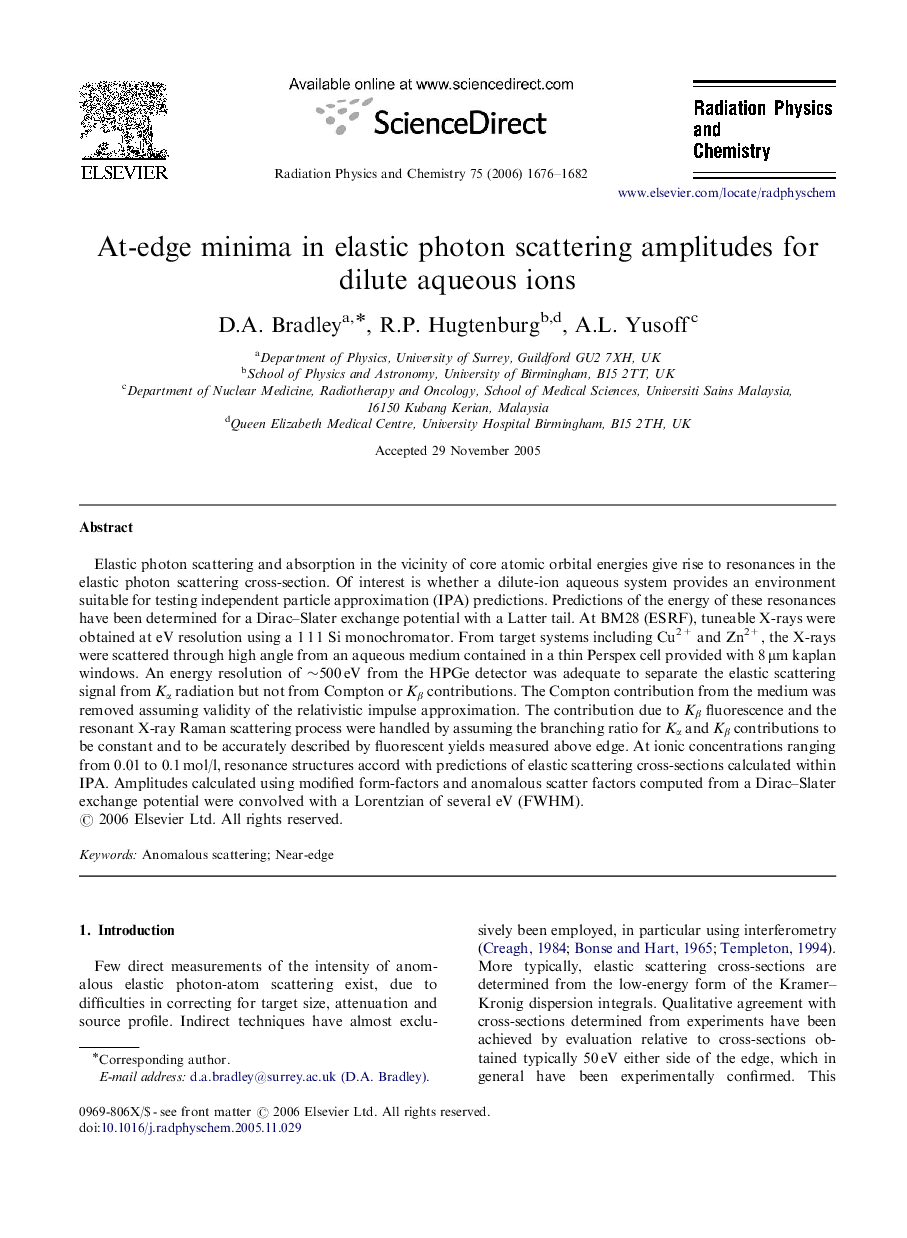| Article ID | Journal | Published Year | Pages | File Type |
|---|---|---|---|---|
| 1883821 | Radiation Physics and Chemistry | 2006 | 7 Pages |
Abstract
Elastic photon scattering and absorption in the vicinity of core atomic orbital energies give rise to resonances in the elastic photon scattering cross-section. Of interest is whether a dilute-ion aqueous system provides an environment suitable for testing independent particle approximation (IPA) predictions. Predictions of the energy of these resonances have been determined for a Dirac-Slater exchange potential with a Latter tail. At BM28 (ESRF), tuneable X-rays were obtained at eV resolution using a 1 1 1 Si monochromator. From target systems including Cu2+ and Zn2+, the X-rays were scattered through high angle from an aqueous medium contained in a thin Perspex cell provided with 8 μm kaplan windows. An energy resolution of â¼500 eV from the HPGe detector was adequate to separate the elastic scattering signal from Kα radiation but not from Compton or Kβ contributions. The Compton contribution from the medium was removed assuming validity of the relativistic impulse approximation. The contribution due to Kβ fluorescence and the resonant X-ray Raman scattering process were handled by assuming the branching ratio for Kα and Kβ contributions to be constant and to be accurately described by fluorescent yields measured above edge. At ionic concentrations ranging from 0.01 to 0.1 mol/l, resonance structures accord with predictions of elastic scattering cross-sections calculated within IPA. Amplitudes calculated using modified form-factors and anomalous scatter factors computed from a Dirac-Slater exchange potential were convolved with a Lorentzian of several eV (FWHM).
Keywords
Related Topics
Physical Sciences and Engineering
Physics and Astronomy
Radiation
Authors
D.A. Bradley, R.P. Hugtenburg, A.L. Yusoff,
